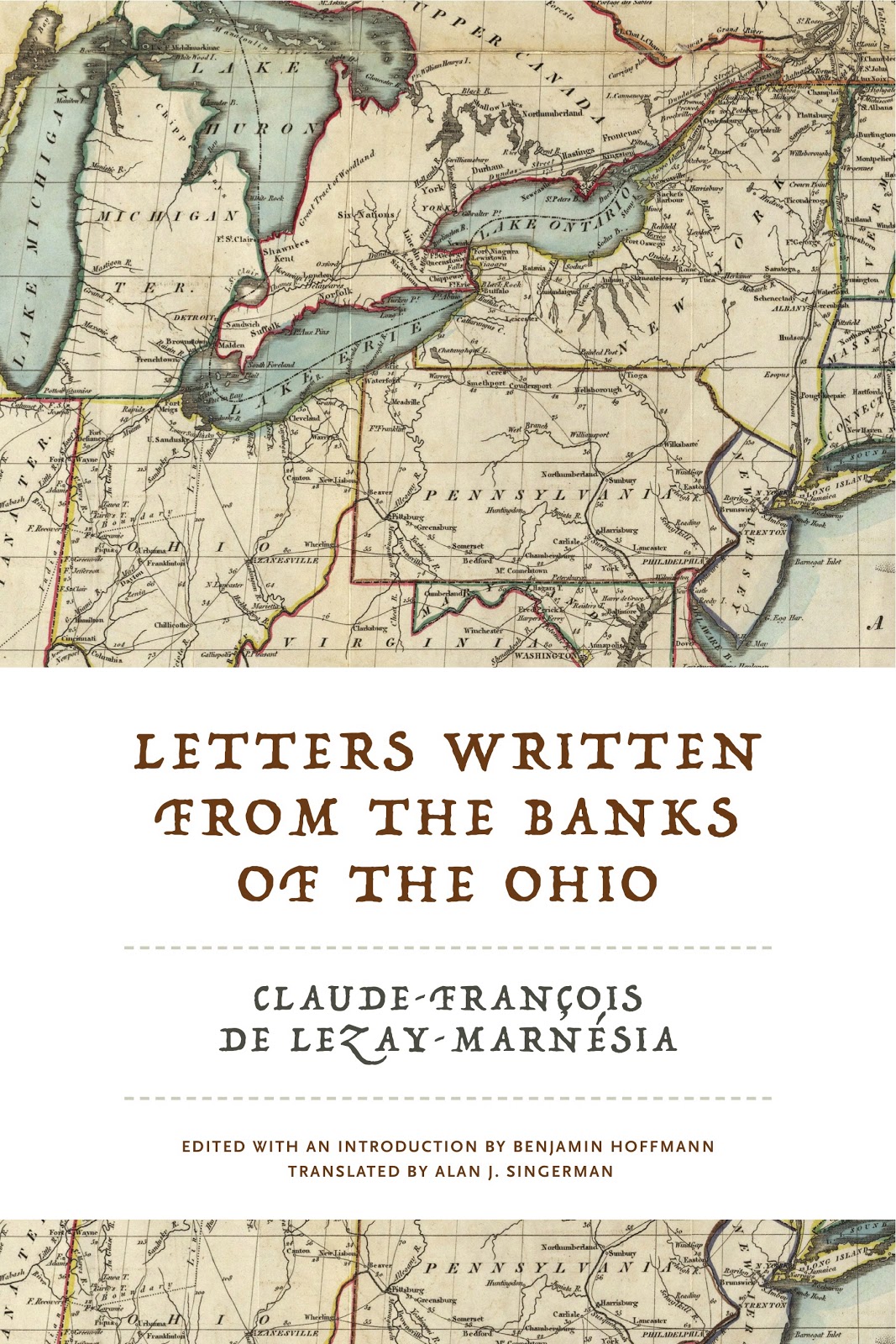By Benjamin Hoffmann (Guest Contributor) 
Every time I go to work, I cross the Scioto river. It’s a wide, long river in the state of Ohio, streaming on the western side of the city of Columbus. Driving over the bridge, you can glance briefly at the banks of the Scioto where, today, mansions stand tall in the middle of lush vegetation. In the summer, people go stand-up paddleboarding on the Scioto; boats rush on the water and, behind them, wakeboarders attempt daring tricks. In the winter, with blocks of ice floating around, and nobody troubling the stillness of its flows, the Scioto looks much more desolate, and Ohioans quickly leave it behind, as they hurry to find the comfort of their home. Very few of them know that the Scioto used to be seen as the center of an earthly paradise. Very few people know that, at the end of the eighteenth-century, foreigners traveled thousands of miles with the hope of building a utopian society on the banks of this river. Very few people know that these foreigners, French people who had witnessed the beginning of their Revolution, decided to leave behind their homes, their relatives, their homeland, with the hope of creating a peaceful life for themselves on these shores, finding only misery, regrets and, sometimes, death, at the end of their journey.
I discovered this story in 2011, when I started my doctoral dissertation at Yale University. I remember the feeling of excitement I experienced at the Beinecke Library when I read for the first time a travel narrative by a little-known eighteenth-century French philosopher, Claude-François-Adrien de Lezay-Marnésia. Entitled Lettres écrites des rives de l’Ohio, this collection of three missives was published in 1792, when their author came back from a two years’ sojourn in the United States, and, after a second edition in 1800, had never been republished or translated. I immediately knew that I had found a rare gem. A fascinating document, the Letters remind us that, afraid of the cataclysmic changes that shook up French society in the summer of 1789, hundreds of people bought land in what is today Ohio from the American Scioto Company, whose office was located in the center of Paris. Their decision to leave France immediately triggered a fierce political controversy. People picked sides, naming themselves Sciotophiles when they were supporting emigration, and Sciotophobes when they considered it treasonous: why leave France, just when it was freeing itself from the abuse of the Old Regime? Surprisingly enough, an Ohio stream was at the core of a raging political debate in eighteenth-century France, just a few weeks after the storming of the Bastille.
But the Letters are also a beautiful literary text, remarkable for its contribution to the utopian genre. Usually, utopias are located far away in the past or situated in an inaccessible place; Lezay-Marnésia gives a specific location to his perfect society: the banks of the Scioto, which he describes as a “promised land”. The Letters Written from the Banks of the Ohio tell the story of his attempt to create a utopia in the United States and dialogue with the greatest thinkers of its time, in particular Montesquieu and Rousseau. I hope the critical edition of this text, beautifully translated by Alan J. Singerman, will revive this long-forgotten story, along with the following truth: at the outset of the French Revolution, Ohio meant paradise, and people came from half a world away to see it.
 Benjamin Hoffmann is Assistant Professor of Early Modern French Studies at The Ohio State University. He is the author of four novels and numerous articles on eighteenth-century French Literature. His next book, Posthumous America: Literary Reinventions of America in French Literature at the end of the Eighteenth-Century, is forthcoming in French and English translation from Classiques Garnier and Pennsylvania State University Press.
Benjamin Hoffmann is Assistant Professor of Early Modern French Studies at The Ohio State University. He is the author of four novels and numerous articles on eighteenth-century French Literature. His next book, Posthumous America: Literary Reinventions of America in French Literature at the end of the Eighteenth-Century, is forthcoming in French and English translation from Classiques Garnier and Pennsylvania State University Press.
Dreaming of an escape to utopia? Have a look at Communism on Mars and Feminist Fairies and Hidden Agendas.
